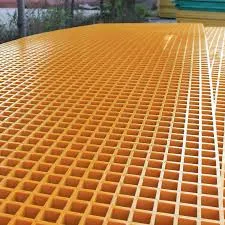
-
 Afrikaans
Afrikaans -
 Albanian
Albanian -
 Amharic
Amharic -
 Arabic
Arabic -
 Armenian
Armenian -
 Azerbaijani
Azerbaijani -
 Basque
Basque -
 Belarusian
Belarusian -
 Bengali
Bengali -
 Bosnian
Bosnian -
 Bulgarian
Bulgarian -
 Catalan
Catalan -
 Cebuano
Cebuano -
 China
China -
 China (Taiwan)
China (Taiwan) -
 Corsican
Corsican -
 Croatian
Croatian -
 Czech
Czech -
 Danish
Danish -
 Dutch
Dutch -
 English
English -
 Esperanto
Esperanto -
 Estonian
Estonian -
 Finnish
Finnish -
 French
French -
 Frisian
Frisian -
 Galician
Galician -
 Georgian
Georgian -
 German
German -
 Greek
Greek -
 Gujarati
Gujarati -
 Haitian Creole
Haitian Creole -
 hausa
hausa -
 hawaiian
hawaiian -
 Hebrew
Hebrew -
 Hindi
Hindi -
 Miao
Miao -
 Hungarian
Hungarian -
 Icelandic
Icelandic -
 igbo
igbo -
 Indonesian
Indonesian -
 irish
irish -
 Italian
Italian -
 Japanese
Japanese -
 Javanese
Javanese -
 Kannada
Kannada -
 kazakh
kazakh -
 Khmer
Khmer -
 Rwandese
Rwandese -
 Korean
Korean -
 Kurdish
Kurdish -
 Kyrgyz
Kyrgyz -
 Lao
Lao -
 Latin
Latin -
 Latvian
Latvian -
 Lithuanian
Lithuanian -
 Luxembourgish
Luxembourgish -
 Macedonian
Macedonian -
 Malgashi
Malgashi -
 Malay
Malay -
 Malayalam
Malayalam -
 Maltese
Maltese -
 Maori
Maori -
 Marathi
Marathi -
 Mongolian
Mongolian -
 Myanmar
Myanmar -
 Nepali
Nepali -
 Norwegian
Norwegian -
 Norwegian
Norwegian -
 Occitan
Occitan -
 Pashto
Pashto -
 Persian
Persian -
 Polish
Polish -
 Portuguese
Portuguese -
 Punjabi
Punjabi -
 Romanian
Romanian -
 Russian
Russian -
 Samoan
Samoan -
 Scottish Gaelic
Scottish Gaelic -
 Serbian
Serbian -
 Sesotho
Sesotho -
 Shona
Shona -
 Sindhi
Sindhi -
 Sinhala
Sinhala -
 Slovak
Slovak -
 Slovenian
Slovenian -
 Somali
Somali -
 Spanish
Spanish -
 Sundanese
Sundanese -
 Swahili
Swahili -
 Swedish
Swedish -
 Tagalog
Tagalog -
 Tajik
Tajik -
 Tamil
Tamil -
 Tatar
Tatar -
 Telugu
Telugu -
 Thai
Thai -
 Turkish
Turkish -
 Turkmen
Turkmen -
 Ukrainian
Ukrainian -
 Urdu
Urdu -
 Uighur
Uighur -
 Uzbek
Uzbek -
 Vietnamese
Vietnamese -
 Welsh
Welsh -
 Bantu
Bantu -
 Yiddish
Yiddish -
 Yoruba
Yoruba -
 Zulu
Zulu
Advanced FRP Field Tank Solutions for Enhanced Storage and Durability Techniques
Understanding the FRP Field Tank An Innovative Solution for Liquid Storage
In the realm of industrial storage solutions, the FRP (Fiberglass Reinforced Plastic) field tank has emerged as a pivotal innovation, offering a range of advantages for the storage of various liquids, including water, chemicals, and petroleum products. The unique properties of FRP make it an ideal choice in various applications due to its durability, resistance to corrosion, and lightweight characteristics.
Construction and Material Properties
FRP tanks are built using a composite material that comprises a polymer matrix reinforced with fiberglass strands. This combination results in a material that possesses high tensile strength while being considerably lighter than traditional storage tanks made from steel or concrete. The manufacturing process, which often involves winding or molding techniques, allows for the creation of tanks in a variety of shapes and sizes, tailored to meet specific storage needs.
One of the defining features of FRP is its exceptional resistance to corrosion. Unlike metal tanks that can succumb to rust and other forms of deterioration when exposed to aggressive chemicals or environmental factors, FRP tanks maintain their structural integrity over time. This property makes them particularly suitable for industries such as wastewater treatment, chemical processing, and oil and gas, where exposure to harsh substances is commonplace.
Installation and Maintenance Advantages
The lightweight nature of FRP tanks significantly simplifies the installation process. The reduced weight means that they can often be installed without the need for heavy lifting equipment, which can lower costs and expedite project timelines. Moreover, the adaptability of FRP tanks allows for installation in various terrains, including locations where traditional tanks would be impractical due to weight or mounting challenges.
Maintenance is another area where FRP tanks shine. Their inherent resistance to corrosion and biological contaminants reduces the frequency and costs associated with repairs and replacements. The smooth internal surfaces of FRP also minimize the accumulation of sludge and other deposits, enhancing the quality of the stored liquid and reducing the need for regular cleaning.
frp field tank

Environmental Impact and Efficiency
In an era where environmental regulations are becoming increasingly stringent, the FRP tank offers an eco-friendly alternative for liquid storage. The materials used in the manufacture of FRP tanks are often recyclable, and the longevity of these tanks contributes to reduced landfill waste compared to traditional storage solutions that require frequent replacement.
Moreover, the thermal insulation properties of FRP can help in maintaining the temperature of the stored liquids, which is crucial in applications where fluctuating temperatures can affect product quality. This thermal efficiency not only safeguards the integrity of the contents but also reduces energy usage associated with heating or cooling systems.
Cost-Effectiveness and Long-Term Investment
While the initial investment in FRP tanks may be higher than that of some traditional options, the long-term cost-effectiveness becomes apparent when considering maintenance savings, longevity, and reduced environmental impact. The lifespan of FRP tanks can often extend to decades, providing a reliable and durable solution that ultimately results in lower total ownership costs.
Conclusion
The FRP field tank stands out as a modern solution for liquid storage, combining strength, durability, and efficiency in a way that traditional materials cannot match. With the industrial landscape continuously evolving towards sustainability and enhanced operational methods, FRP tanks represent a forward-thinking choice for businesses that prioritize reliability and environmental responsibility.
As industries around the globe embrace these advanced materials, FRP tanks will likely play an increasingly vital role in providing safe, effective, and sustainable liquid storage solutions. The versatility and benefits of FRP make it a noteworthy consideration for anyone involved in the procurement or management of liquid storage systems, ensuring that the challenges of today are met with innovative, practical solutions that meet the demands of tomorrow.









